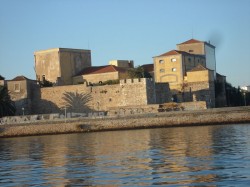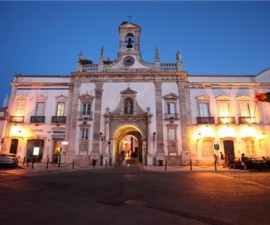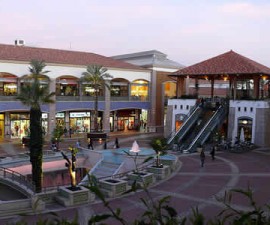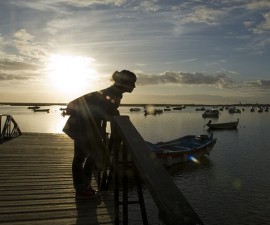Portugal’s southern capital of Faro is a beguiling city that mixes new and old to exciting effect. Most visitors when they visit the Algarve fly into Faro International Airport and head straight to the well-known resort locations that are dotted along this 200km stretch of coastline, flanked by sandy beaches and dramatic rock formations. But the city of Faro itself offers much to be discovered stretching back to prehistoric times.

There has been a settlement on the site of the modern day city of Faro for several thousand years, however the city really came into its own as the town of Ossonoba during Roman times when it established itself as a major fishing port and centre of the salt industry. Faro was the last place on the Iberian Peninsula to be liberated from Islamic rule, in 1249 and its long history, which continued through Moorish times and the Christian reconquest to the present day, is played out in the architecture and historical remains that line the streets of the city and many of the surrounding areas.
Faro’s Old Town is a delightful swirl of meandering cobbled streets, lined by nineteenth-century architecture and older remains that survived the sixteen-century reconquest and the devastating earthquake that destroyed much of the city at the end of the eighteenth-century. This is the perfect place to begin a tour of Faro’s historic sites.
Entering through the Arco da Porta Nova to the Vila-Adentro, the oldest section of the Old Town, the cobbled streets lead off in every direction to reconverge at the largo da Sé, home to the Town Hall, the eighteenth-century Bishop’s Palace and the ancient cathedral. Faro Cathedral is one of the jewels in the crown of the city’s historic past.
Built on the site of a former Roman forum turned mosque and rebuilt several times due to a combination of strategic attacks and natural disasters, it boasts an interesting mix of architectural styles that seem to sum up Faro’s history in a single glance. Take time to climb Faro’s cathedral tower for sweeping views out over Faro Old Town with its Arco da Villa and Misericordia church close by and across the wetlands of the Ria Formosa to the Atlantic beyond.
Take in the Municipal Museum which, originally a sixteenth-century convent, is now a museum housing a collection of art and artefacts that shed an interesting light on the city’s varied history and culture. Here visitors can view a thirty-foot section of mosaic floor dating back to Roman times. One of the largest ever to be found in the northern colonies of the former Roman Empire, it was discovered when building work was taking place some years ago.
Exit Faro Old Town through the Arco de Repouso to continue your tour of Faro’s historic sites. Slightly inland, away from the Mouraria or Old Town walls, is the beautifully gilded baroque Igreja do Carmo, or Carmelite Church with its legendary Capela dos ossos, or Chapel of Bones. Here the chapel is literally lined with the bones of monks, carefully arranged in neat rows, the arms and legs framing smiling skulls that greet each and every visitor as they enter through the chapel doors. The chapel was built in 1816 and was the brainchild of the Carmelite monks who built it, inspired when they displaced a cemetery containing the remains of hundreds of their predecessors during the building process.
Complete your tour of Faro’s historic sites with a trip to Estoi, eleven kilometres from Faro city centre where you will encounter more reminders of the area’s importance during the times of the Romain Empire. Estoi is home to an expansive site of Roman ruins dating back to the AD100-200. Here you will find ancient architectural features including columns and original mosaics depicting marine scenes.
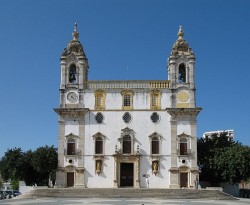
There are also Roman baths, a beautifully preserved Roman villa, a wine press, mausoleum and the remains of a temple. The latter was converted and amassed into a Christian basilica some time during the third century, bestowing it with the honour of being one of the world’s oldest churches.
Don’t leave Estoi without visiting the eighteenth-century Estoi Palace, which was one of the few buildings to escape the searing earthquake that devastated so much of the area in 1755. Distinctive for its pink Rococo façade, Estoi Palace is set in secluded shaded gardens, which provide a welcoming break from the hot afternoon sun of the Algarve in high season.
While most visitors head to the Algarve in search of sun, sea, sand or the chance to perfect their golf swing, this historic tour provides an alternative view of this fascinating region – a window onto Faro’s exciting historic past that every visitor to the area should consider.
